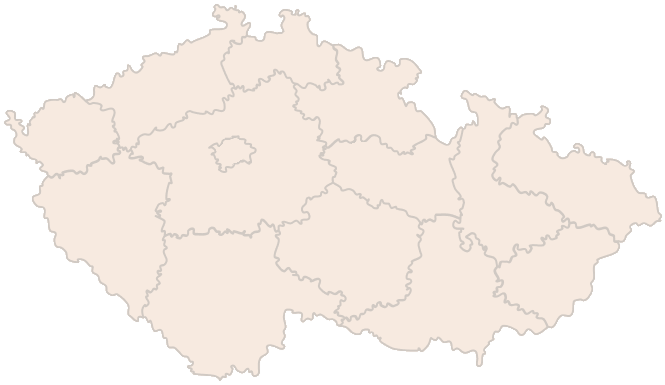What is value added tax (VAT)
VAT is an indirect excise tax levied by the state on every sale of goods and services. In practice, it works by each VAT-paying business adding the appropriate rate to the sale price (in 2025, the rate is 21% basic and 12% reduced ). The tax is then remitted to the State, while final consumers pay it in the purchase price.
VAT is collected at each link in the chain: producer → wholesaler → retailer → consumer. Each taxpayer only pays tax on the value he has added to the goods or services (the so-called “value added”), because he deducts from the total VAT collected the VAT he has paid to his suppliers. As a result, only the last buyer bears the tax financially, but the state has control over every stage of the transaction.
Example:
A manufacturer sells a table to a wholesaler for CZK 1 000 + 21% VAT (CZK 210). He pays CZK 210 to the state.
The wholesaler sells the same table to the retailer for CZK 1 500 + 21% VAT (CZK 315). However, it will only pay the difference 315 – 210 = 105 CZK because it will deduct the 210 CZK as tax paid to the manufacturer.
The retailer sells the table to the final customer for CZK 2 000 + 21 % VAT (CZK 420) and pays CZK 420 – 315 = CZK 105. In total, therefore, the State receives CZK 210 + 105 + 105 = CZK 420, which corresponds to 21 % of the final price excluding VAT.
Are you solving a similar problem?
Not sure how to do your taxes properly so you don't get it wrong?
We can help you navigate the law, whether it’s dealing with a specific tax situation, preparing for an audit by the tax authority or defending yourself in court.
I want to consult
- When you order, you know what you will get and how much it will cost.
- We handle everything online or in person at one of our 6 offices.
- We handle 8 out of 10 requests within 2 working days.
- We have specialists for every field of law.
Benefits of VAT payment
Deduction of input VAT
The biggest benefit is that, as a taxpayer, you deduct VAT on the inputs you purchase. Practically, this means that if you buy a machine for CZK 1,000,000 + 21% VAT, you will get back CZK 210,000, so the net purchase price will drop to CZK 1,000,000. However, for some items (typically cars), the law introduces a limit of CZK 420,000 per registration mark; above this limit, the deduction is already reduced, which is good to take into account in the cash-flow plan. In practice, therefore, pay-as-you-go significantly cheapens your investment and increases your pricing flexibility.
Better cash flow for cross-border transactions
For supplies between taxpayers in the EU, the reverse charge applies: VAT is not deducted in the supplier’s country, but is declared by the customer in his home country. So you invoice tax-free, you don’t drain your liquidity, and the buyer also claims the tax as a deduction, so payment is made without actually paying money to the government. Another scheme, the One-Stop Shop(OSS), is that you pay VAT in one country with only one VAT return, even if you sell to multiple EU countries.
Greater credibility with larger operators
Many VAT operators prefer to use VAT-registered suppliers because they are not at risk of being caught by the reverse charge scheme. The ARES VAT register makes it easy for such a customer to verify you and automatically eliminates the risk of trading with an “unreliable taxpayer” for whose unpaid tax they would be liable. Being a tax payer therefore enhances your reputation and makes it easier to enter public procurement or supply chains of large companies.
Tip for article
How do corporate taxes work? How much is VAT for companies and how do they file their tax returns? Find out in our article.
Disadvantages of paying VAT
Administrative burden and penalties
As a taxpayer, you file a VAT return and a control report for each tax period. The tax administration fines late or incorrect submissions in amounts ranging from CZK 1,000 to CZK 500,000, depending on the severity and repetition of the error. You must also respond in time to the tax authority’s various requests, otherwise you risk further fines. Therefore, the biggest cost is not the actual tax payment, but the administration and the risk of penalties.
The need to keep detailed records and archives
The law requires the taxpayer to keep tax documents and electronic records for at least ten years from the end of the tax year. The documents must be accessible and legible at all times, ideally in electronic form with guaranteed authenticity and integrity of the content. This implies the need to invest in accounting software, cloud storage and staff capacity, which a non-VAT payer does not have to deal with.
Increased cost to end consumers
If you sell predominantly to non-taxpaying individuals, you need to add tax to the price – and either accept a lower margin or increase the price. For example, a hairdresser who used to charge CZK 600 must invoice CZK 726 after registration to keep the same profit. However, some customers may react to the higher price by switching to aVAT-free competitor, and you will lose revenue.
VAT payer or non-payer? How to calculate what is worthwhile for you
At first glance, the decision whether to register for VAT and become a taxable person may seem like a purely formal exercise. But in reality, it is a strategic choice that will affect your pricing, cash flow and administration in the long term. The following four steps will help you make a quantified decision.
1. Calculate input VAT
Gather all your invoices for the last twelve months (materials, licenses, marketing, rent, utilities) and separate the base amount from the VAT amount. If you are not yet taxable, this is a tax you are now irreversibly paying to the government.
Practical example
An advertising studio spent last year:
– hardware CZK 550,000 + VAT CZK 115,500 – software CZK 120,000 + VAT CZK 25,200 – marketing CZK 200,000 + VAT CZK 42,000
In total, the studio paid CZK 182,700 to the state. If it were a VAT payer, it would claim this amount in its first VAT return and the money would be refunded (or offset against its own tax liability).
The key question is therefore: Is the VAT on your inputs high enough to cover the taxpayer’s accounting and administration costs?
2. Map the structure of your customers
Export your list of invoices and note for each customer whether they are VAT-registered (e.g. check in the ARES register). You need to know what proportion of turnover is attributable to customers who deduct VAT and what proportion is attributable to final consumers.
Model scenario
If 80% of your turnover is made up of taxpaying companies and only 20% by consumers, a 21% increase in price will only affect a fifth of your clients, but the input deductions will save you tens of thousands. But if the ratio is reversed (e.g. an e-commerce store selling fashion to the end customer), you risk that paying VAT on your margin will make your business unprofitable.
3. Quantify the logistics costs and the risk of errors
- Accounting software + XML export to EPO: CZK 2,000 – 3,000 per month.
- External accountant for VAT returns, control statements and summary reports: CZK 1,000 – 5,000 per month depending on the number of documents.
- Your time: if, for example, you spend two hours a month checking records instead of doing marketing, this is worth the real cost of lost profit.
- Risk of penalties: late VAT declaration = penalty from CZK 1,000; ignored call for audit report = lump sum of CZK 30,000; repeated serious misconduct = up to CZK 500,000.
Compare these costs with the amount of deductions from step 1. If the deduction significantly exceeds the overhead, the payer makes sense. If the difference is minimal, stay a non-taxpayer and eliminate the risk of errors.
Tip for article
When to register for VAT as a self-employed person? What are the advantages and disadvantages? The next article will answer this question.
4. Follow the limit for VAT payers 2 mil. CZK
For 2025, turnover is monitored per calendar year and once you exceed CZK 2,000,000 you are taxable from 1 January of the following year. At CZK 2,536,500 (EUR 100,000), you will be liable for VAT the next day. Therefore, the growth in sales often means that voluntary decisions turn into compulsory registration anyway.
Strategies to cope with the limit:
- Early “voluntary” registration for VAT – you avoid the shock of the tax office backcharging you for the months you exceeded.
- Stagger your invoicing – if it makes economic sense, spread large projects over two years so that you don’t exceed the limit in leaps and bounds.
- Flat rate tax – for sole traders on a flat rate scheme, watch for entering flat rate tax to end.
Final checksum
- Input tax deduction – will the state reimburse you more on VAT invoices than you pay for accountants and software?
- Customer structure – how many of your customers are not “hurt” by VAT?
- Administration and penalties – can your business handle the regular VAT returns?
- Turnover limit – isn’t registration just a matter of time?
If the three answers are YES, voluntary VAT registration this year is worthwhile; conversely, a preponderance of NOs signals that it is better to remain a non-taxpayer and focus on margin growth outside the tax regime.
Summary
VAT compliance is particularly worthwhile for companies that buy a lot of taxed inputs, trade predominantly with taxpayers (and thus are not hurt by the tax increase) and need greater credibility with larger or public procurers. Key benefits are the ability to deduct input VAT (can make investments significantly cheaper), improved cash-flow for cross-border transactions through reverse charge and OSS, and a reputational plus when entering large supply chains.
On the other hand, payerisation brings administrative burdens (periodic returns, audit reports, archiving) and the risk of high fines, the need to invest in accounting software, and increases the cost to end consumers.




